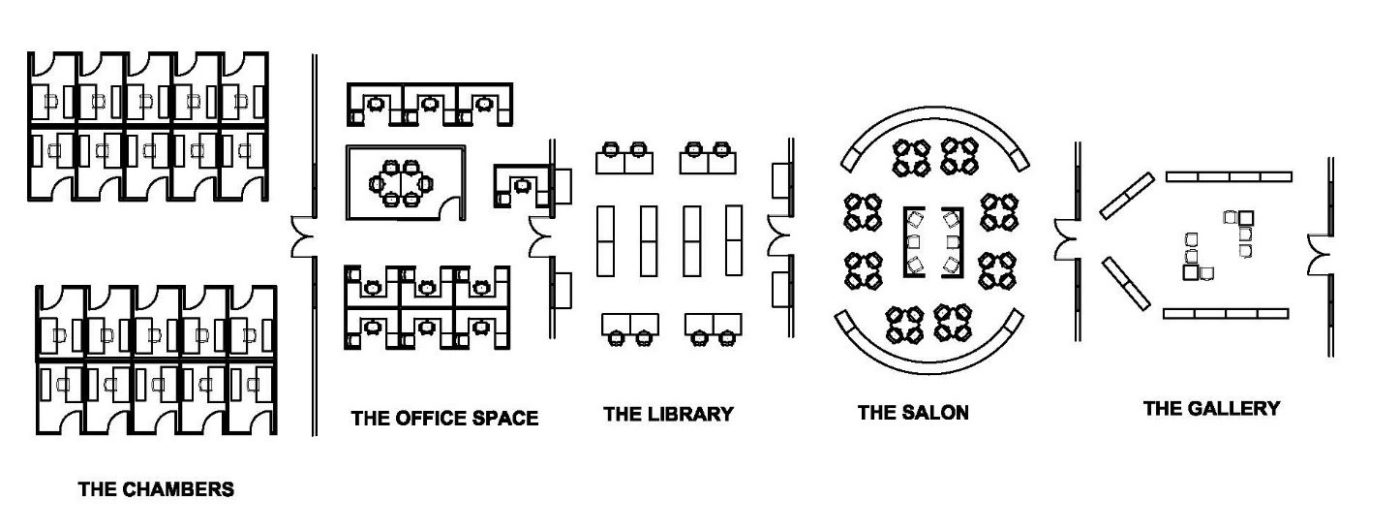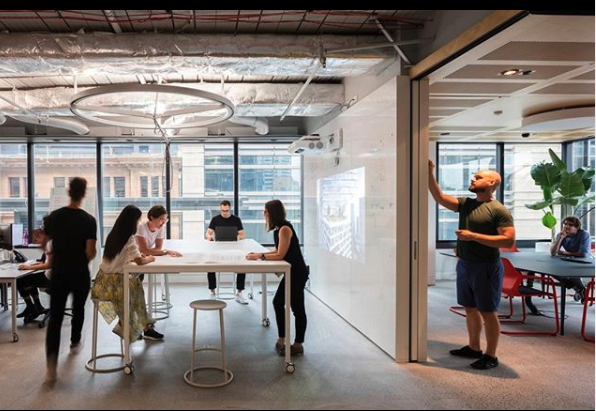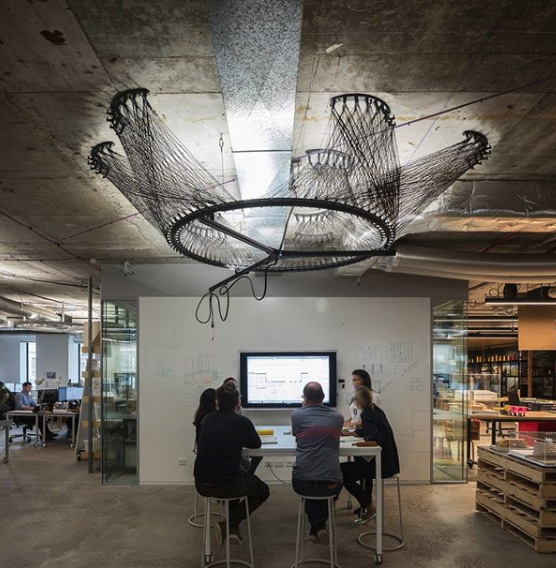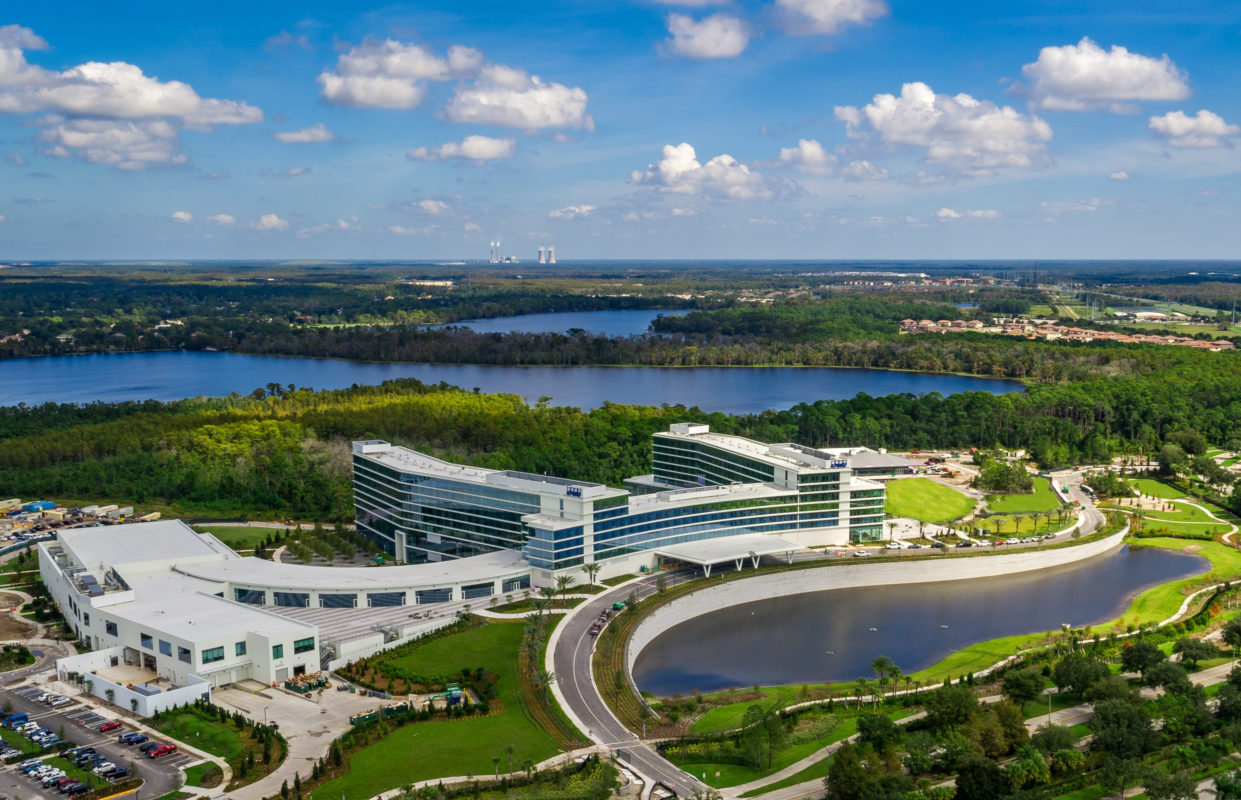People have been saying that the open plan office sucks for years now, but what are organisations actually doing about it?
Noisy typers. A hot hits playlist on repeat. That passive aggressive huff from a colleague. Banal chit-chat. The chronic sniffler. The open plan office is a nest of distractions. It can make it feel as if coworkers are hell-bent on preventing you from being even slightly productive.
These frustrations are fairly universal. Media outlets (including HRM) and workplace design experts have been beating the ‘open plan offices are dying’ drum for some time now, yet I’d bet my lunch that a lot of you are reading this article while trying to tune out the morning chatter of colleagues.
There are some organisations that are actually trying to do something about this through strategic workplace design. While many organisations wouldn’t have the budget to execute these exact models, these examples could offer valuable takeaways.
From the blueprint stages
For organisations designing office spaces from scratch, consider taking a leaf from US architect David Dewane’s book. He’s the man behind the ‘eudaimonia machine’ office design (eudaimonia is a Greek word that is apparently translated as “human flourishing or prosperity”). While the design is currently quite conceptual – and somewhat radical – Dewane has been in discussion with organisations, including a hospital, about utilising his design, and has rolled out aspects of the design for a New York-based experiential retail and work space called Story. The design divides the workspace into five sections. Dewane’s intention is to create an environment that slowly warms up the brain as staff make their way through each section. The end goal is a complete state of ‘deep work’.

Let’s walk through the idea behind each of the five sections above.
You start in the gallery. Speaking to Architectural Digest, Dewane says this space is all about “positive peer pressure” as it’s designed to showcase staff’s best work and apply a “healthy dose of pressure” for others to seek inspiration from.
The second space – the salon – is all about socialising. This is where the coffee catch-ups are had. “This is the space where you engage with coworkers in a deeply social setting and ideas come out of that,” says Dewane.
Next you walk through to the office space (the diagram above is slightly different to the Story workspace design: the office comes before the library). This space mimics the office layout most of us would be used to, with a large conference table as well as single desk spots. This is where you tend to emails, administrative work, and host meetings. People might be chatting in this area, but it’s okay because you’re only engaging in simple tasks.
Next is the library. This is a low-tech space full of resources. The idea is that you can get your research done before getting into your deep work stage, where you want to use as little technology as possible.
Now to the final section of the design, the chambers. This is where things might get a little too experimental for some people. Immediately before entering the chamber, it’s recommended that you take a shower and change into “really simple clothes”. There’ll be lockers to store your devices to ensure your time in the chamber is completely distraction free.
It’s soundproof and set up for individuals to spend a few hours in at a time. The idea is that this environment allows you to do your best work without having people distract you (to be honest, I wish I was in a chamber while writing this article).
After they are done, employees enter the contemplation zone. This is a simple area with benches overlooking greenery of some kind where staff are supposed to reflect on their work and re-group.
While you might not have the budget (or interest) in overhauling your office layout to this extent, there’s still something to be said for differentiating between where staff socialise and where they accomplish their most difficult work. Expecting they’ll be able to the best version of the latter while the former is happening is wishful thinking.
Reverse hot-desking
You might not be into the idea of asking staff to take a shower and get into comfy clothes before diving into ‘deep work’, but this next idea is probably more in line with what your organisation can, and wants to, do.
Sydney-based architecture firm has what it calls an “agile future-focused design”. That’s not just the company big-noting itself, it was awarded the Workplace Design award at the Australian Interior Design Awards last year to recognise this.

Prior to its refurbishment, this office was just like others: fixed desks and glitchy WiFi signals included.
Being an architecture firm, all staff were consulted for their expertise prior to the re-design. Getting staffs’ thoughts is often critical to getting their buy-in.
HRM have said it before and we’ll say it again: hot-desking is the absolute worst. Sure, being chained to a specific space can be limiting, but having to sit at a new desk, in a new location every day can also be incredibly frustrating and time-consuming. To arrive at a happy medium BVN put all its furniture on wheels.
This allows staff to roll their desk across the space to join a new team or move into a private space work alone. It’s like the opposite of hot-desking. Instead of having to be malleable to the space, the space is malleable to the employee.
Another issue BVN was having prior to its redesign was a lack of high-speed data. To remedy this, it created a ‘Data Boom’ (pictured below) – a retractable cable in the roof that feeds a fibre optic network to eight work stations. It has worked so well that it’s now patented as a new ceiling system.

Again, the idea of being able to overhaul your office outfit and install a state of the art power cable that dangles from your ceiling might be implausible for your workplace, but thinking about small, simple ideas – like putting wheels on your desks – could make your workplace more collaborative and productive.
Off-site investments
Of all the examples shared in this article, this is perhaps the most far-fetched. But again, it’s the concept that we’re focusing on, not the bells and whistles.
In Orlando, US, KPMG has dropped $450 million on what it’s calling a “lakehouse”. No, it’s not a quaint cottage where staff get together to sip tea, play boardgames and go fishing. In fact, it’s kind of the opposite of that. It’s a dedicated learning and development centre that, according to the company’s website, is designed to deliver “one million hours of in-person professional development to 800… professionals each week”.

The facility houses 90 classrooms and ‘innovation labs’, 800 guest rooms, a gym, cycling and running paths, and an auditorium capable of housing 1,000 people.
The lakehouse has been five years in the making and the investment is hefty (it’s the biggest capital investment in the company’s 120-year history), but KPMG executives crunched the numbers and found it was spending around $100 million each year on hotel costs for staff attending off-site training and development programs. So, in the long-run this investment made sense for the professional services giant.
If your organisation relies on continuous learning (that’s all of us, really), perhaps it’s worth thinking about the kind of external spaces you could create to facilitate skills growth in your people. I’m not suggesting you frantically search for $450 million behind the couch cushions, but perhaps you could rent a space for staff to utilise, or book a spot in a co-working facility for monthly L&D courses – anything that takes staff out of their usual four walls and offers them the chance to learn something new.
Having the right environment is an important part of building an effective team, but this needs to be paired with strategic HR thinking. AHRI’s short course is designed to give you expert tips to get the most out of your people.


Such an interesting article. A very much prevalent problem, but not without a solution. Or atleast it gives enough ideas to innovate enough in one’s capacity.
Oh wow, I thought I was lucky to have a sleeping pod at work but this is next level! Love it … especially the call out “it’s the concept that we’re focusing on, not the bells and whistles” as often we hear amazing things and think “we could never do that”. But really, you can find ways with some creative thinking and commitment to make positive enhancements to your workspace.